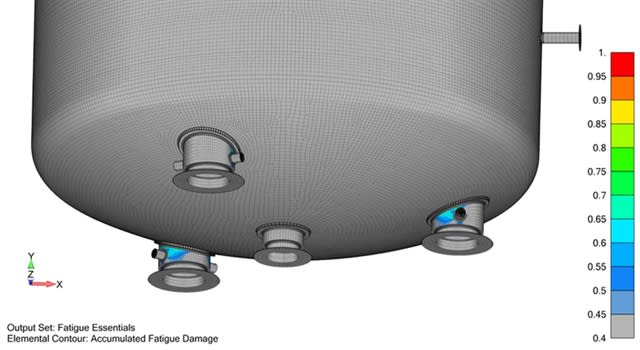numberfive
Mechanical
- Mar 18, 2011
- 48
Hello everyone,
I'm having a problem with transverse cracks in carbon steel welds on a low pressure steam header for a sawmill drying kiln operation.
The header is 20" STD SA-106 Gr. B with 20x20x10 WPB reducing tee's on either end for 10" dirt legs and a 20" WPB pipe cap on either end. The header has (2) ea. 8", 10", and 12" weld-o-let style branch connections with 150# RFWN flanges on each.
The header was built in 2022. Solid wire root passes (Miller RMD PipePro), flux core fill and cap passes. ER70S-6 and E71T-1M respectively.
Operating conditions are 10-12 psi. at around 250 deg. F.
The customer has had (3) leaks to date due to transverse cracks across the welds.
We just stripped all insulation and performed MT examination of every weld today and found a total of (1) transverse cracks.
Weld quality looks really good both on root and cap sides.
Has anyone experienced similar issues with carbon steel? Very strange.
Took multiple hardness readings today and all ranged from upper 150's to lower 170's HB both in weld metal and base metal.
Also took shavings for a chemical analysis of weld wire.
Thank you,
numberfive
I'm having a problem with transverse cracks in carbon steel welds on a low pressure steam header for a sawmill drying kiln operation.
The header is 20" STD SA-106 Gr. B with 20x20x10 WPB reducing tee's on either end for 10" dirt legs and a 20" WPB pipe cap on either end. The header has (2) ea. 8", 10", and 12" weld-o-let style branch connections with 150# RFWN flanges on each.
The header was built in 2022. Solid wire root passes (Miller RMD PipePro), flux core fill and cap passes. ER70S-6 and E71T-1M respectively.
Operating conditions are 10-12 psi. at around 250 deg. F.
The customer has had (3) leaks to date due to transverse cracks across the welds.
We just stripped all insulation and performed MT examination of every weld today and found a total of (1) transverse cracks.
Weld quality looks really good both on root and cap sides.
Has anyone experienced similar issues with carbon steel? Very strange.
Took multiple hardness readings today and all ranged from upper 150's to lower 170's HB both in weld metal and base metal.
Also took shavings for a chemical analysis of weld wire.
Thank you,
numberfive




